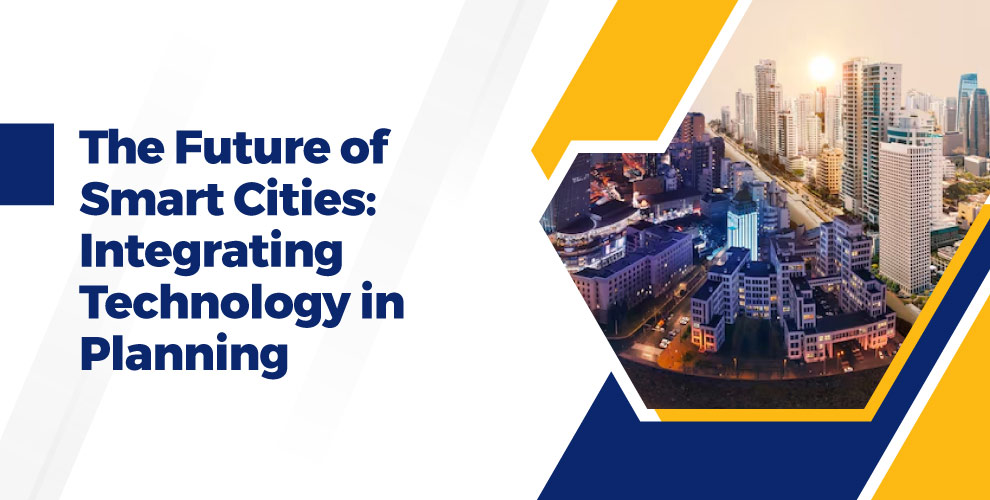Have you ever imagined living in a city where everything is interconnected and makes life easier and more sustainable? In this blog, we are discussing smart cities which are urban areas where innovation and technology combine to produce more sustainable and effective surroundings. The long-term goal of smart cities is to integrate technology into the fundamentals of urban planning. Let’s investigate this fascinating topic and see how it will affect our future way of life, work, and play.
A smart city employs technology to improve its citizens’ quality of life. But it goes beyond automatic systems and colorful apps. It’s about the infrastructure as a whole collaborating to address practical issues. Imagine that your city automatically modifies traffic lights to reduce congestion when it detects periods of high traffic. Alternatively, intelligent drainage systems are activated to minimize floods during periods of heavy rainfall. These are a few instances and the amazing potential of technology makes them all feasible.
Role of Technology in Urban Planning
Earlier, city planners relied on paper maps and outdated data. But today, they are lucky to have access to huge data and predictive algorithms. It enables them to design cities that are more efficient and responsive to the needs of the people. Urban planning has always been a difficult puzzle to solve, but technology has provided us with a new set of tools that can make the process much easier.
Data collecting is one of the most important ways that technology is influencing urban planning. Cities are increasingly using sensors and IoT devices to collect massive volumes of data on anything from traffic patterns to energy consumption. After that, this data is examined to assist in decision-making that can enhance municipal resources and services. If we had access to real-time data, just think of how much simpler it would be to handle waste or determine when a streetlight needs to be repaired.
Smart Infrastructure
Infrastructure is the backbone of any smart city. Smart infrastructure which includes intelligent transportation systems and energy-efficient buildings, is intended to maximize resources and improve people’s quality of life. Here are a few notable developments in this field:
Sustainable Buildings
As cities continue to grow, energy usage is one of the major problems. But, fortunately, smart buildings with sensors can lower energy consumption by regulating the lighting and cooling automatically. Imagine an energy-efficient building that maintains comfort by regulating its temperature based on the time of day or the number of occupants.
Smart Transportation
Have you ever wanted to drive traffic-free and reach your location on time? Because today one of the biggest problems in many cities is traffic congestion. And it is obvious to get stressed while starting your day. However, with the help of technology, cities are starting to install smart transportation systems that can regulate traffic flow in real time. To cut down on delays, communities can use data from sensors and cameras to modify traffic signals, propose other routes, or even provide real-time public transportation schedules. Autonomous and electric vehicles are also becoming more popular, which may help cut down on pollution and traffic.
Green Spaces and Sustainable Urban Design
As cities grow, they frequently become concrete jungles, but technology can assist in including more green spaces. Sensors that track soil moisture, for instance, it can be installed in smart parks to modify watering schedules. By doing this, green areas can flourish without wasting water. With the use of technology, sustainable design principles can also guarantee that new construction and projects use resources efficiently and sustainably.
Data-driven Decision Making
The capacity to use data to influence decisions is one of the most crucial features of smart cities. Cities can gather information from a variety of sources such as traffic sensors and environmental monitoring systems. To obtain knowledge that can direct urban planning, this data is then processed and examined.
For example, if a city notices a spike in traffic in certain areas, planners may quickly adapt by rethinking road networks or improving public transportation routes. As an alternative, if data shows that the air quality in specific districts is poor, the city can pursue green initiatives like more trees or stricter car emissions rules. This data-driven strategy ensures that cities remain flexible and responsive, always adapting to meet the needs of their residents.
The way we envision and plan our cities will change along with technology. The development of smart cities has enormous promise for establishing more connected, inclusive, sustainable, and efficient settings. In the future, technology will enable us to live more intelligently, work more productively, and connect with our communities on a deeper level.
What can you anticipate from tomorrow’s smart cities, then? Greener places, better air, quicker commutes, and a more responsive government are all results of incorporating technology into urban design. We are only beginning to explore this amazing future. Are you prepared to participate?


